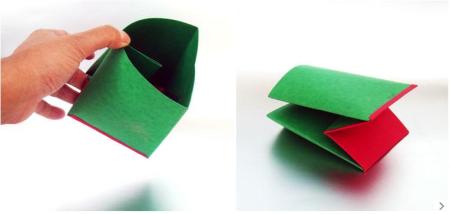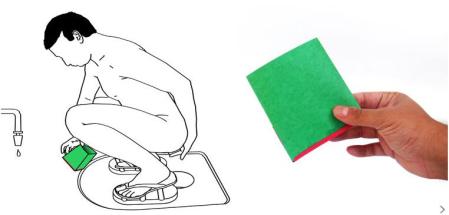Disposable Biodgradable Mug for 3rd World
This may not make sense to you because of where you live and how you were raised, but imagine the hygiene and environmental factor for people in third world countries. Plus this would be good for camping and your home emergency/ earthquake kit.


“When I was a student,” Paul Sandip recalls, “I had to travel by trains. And because of our large population here in India, you normally don’t get reserved-ticket service. In fact, you normally have to travel sitting in the aisles. “So lots of travelers, like me, had observed this pressing need of people who use the public toilets in these trains. We Indians prefer to use water to wash ourselves, instead of using toilet paper. But there was no product that was catering to this need. So people would carry maybe empty water bottles or teacups, something like that.” Water, Sandip clarifies, is supplied on the trains, with taps in each public lavatory. But without containers, it’s useless to travelers.
“So I started thinking, why not have a product a person could buy inexpensively on a platform? Something nice and portable. It needed to be foldable because you’re traveling and you don’t have much space. It also had to be something you could throw away. You wouldn’t want to use it again because it would be very dirty. So you wanted something you would throw off the train.” “But then, you had to think, when you say you’re going to throw it off — a very huge concern arises because you have to ask if this product is going to harm the environment or not. A lot of people would want to use this, and it might create a lot of nuisance.” “That’s when I started exploring materials and came across a particular type of paper which had both the strength to withstand 1.2 liters of water, but which could also be glued with organic glue, and thirdly, that it would disintegrate after some point in time. I needed to connect these three different ideas of hygiene, portability and eco-friendliness. “The place I come from is an ancient part of India,” the Kolkata region of portable in West Bengal, known to some by its anglicized name, Calcutta. “And there, we have a type of paper for vendors to use in selling food. After you use it, you can just throw it away. And those packages are made from recycled newspapers.” Using this paper as his starting point, Sandip has test-marketed his Disposable Mug with the state railway’s cooperation on one of its longest lines. What the railway authority has asked is that private vendors make Sandip’s mugs available on the train platforms. Sandip’s effort now is to find sponsors who will pay for the paper and glue in exchange for advertisements printed on the mugs. To move to this next phase, Sandip has a business partner, a brother of his wife. “My brother-in-law has been thinking on how this can be manufactured,” Sandip says. “Because this product is needed all over the country — and that means logistics could be a huge problem. So the idea is to have it manufactured by the people who live in slums by the train lines. They live in unemployment and poverty, and this would give them something to sell. It creates the product all over the country. We just need the funding for purchasing the raw materials.” Sandip and his brother-in-law, then, are working on finding advertiser-underwriters of the product, to get the paper and glue into the hands of the slum dwellers who will make and sell it. “And you know,” Sandip says, “I normally deal with housewares and utensils as a designer. I have a small range of products, things housewives use at home. But for me, it’s not enough just to think about styling in design. You also want to put heart into it. That’s the real difference.” Additional credits: Bhushan Bawankule; Indian Railway Authority. Written by Porter Anderson |
